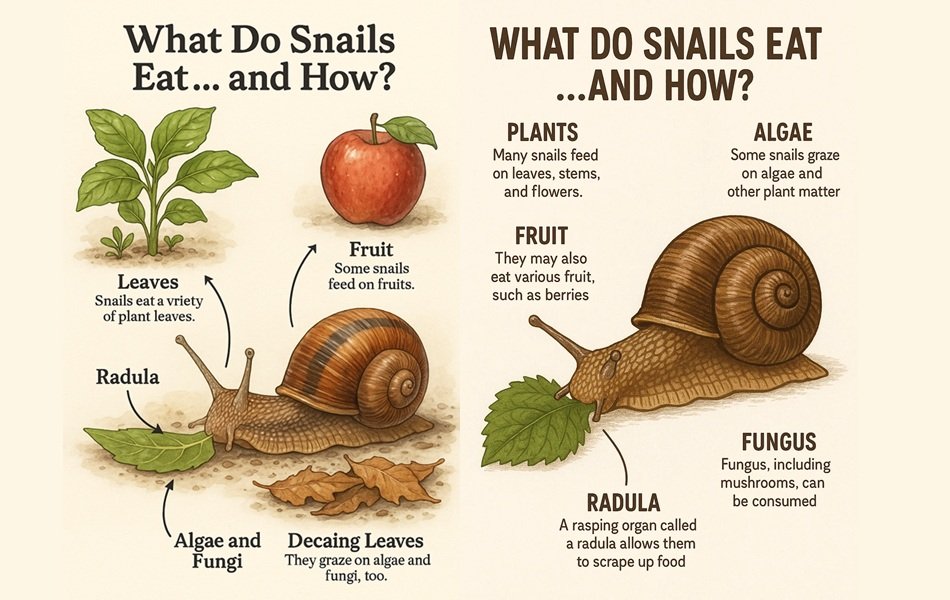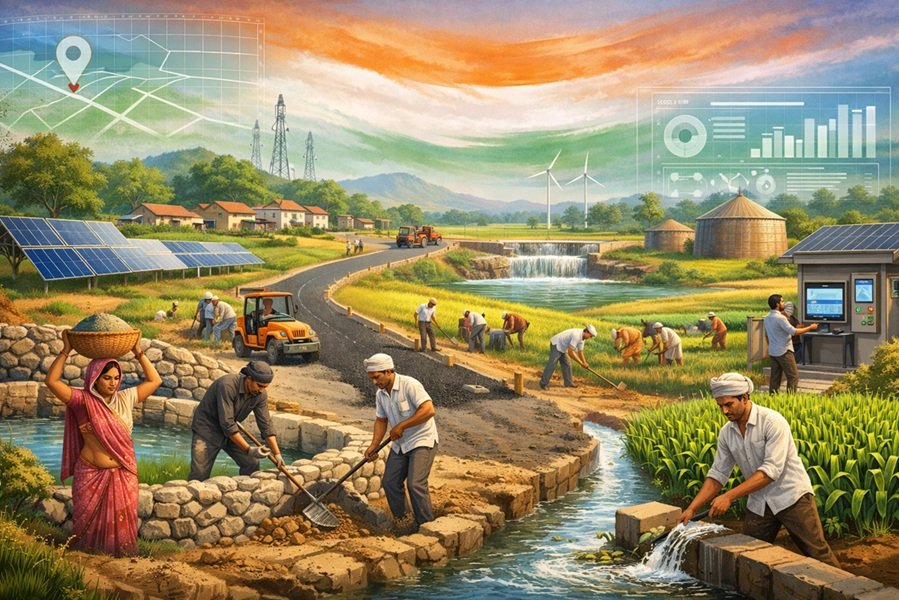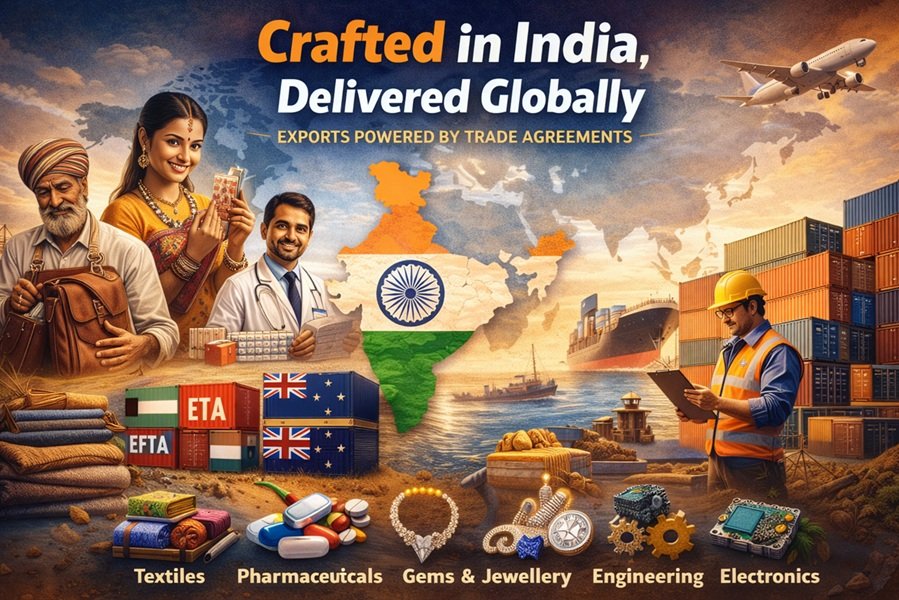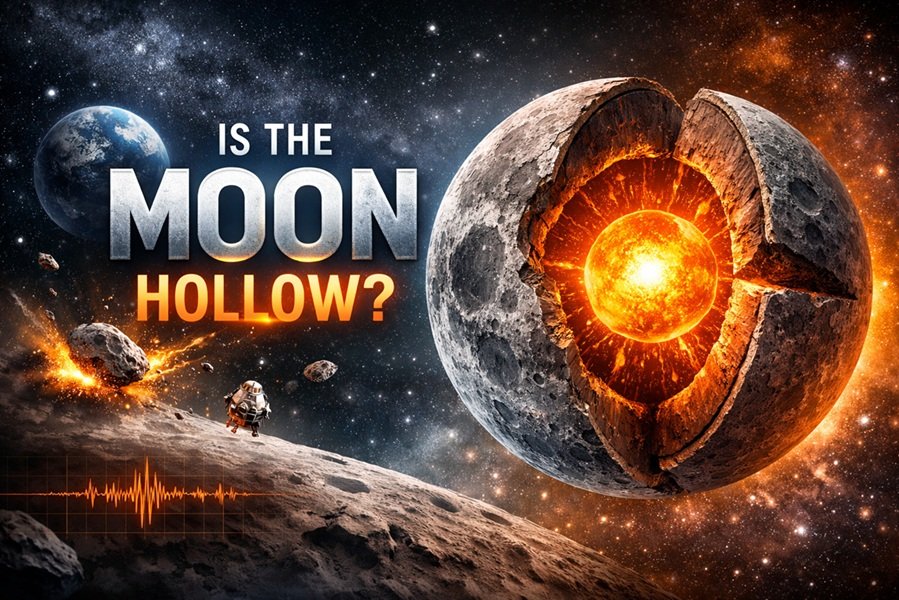
Snails, those slow-moving, spiral-shelled creatures found in gardens, forests, oceans, and freshwater habitats, are far more interesting than they first appear. Their dietary habits are as diverse as their species. Whether you’re a gardener trying to protect your plants, a pet owner caring for a snail, or simply a curious mind, understanding what snails eat and how they eat reveals a lot about their biology and ecological role.
Types of Snails: Herbivores, Omnivores, and Carnivores
Snails belong to the class Gastropoda, and there are over 60,000 species found worldwide. Their diet depends largely on their habitat and species classification:
1. Herbivorous Snails
These are the most common type, especially among land snails.
- What they eat: Leaves, stems, soft bark, vegetables, algae, fruit, and flowers.
- Examples: Garden snails (Cornu aspersum), Apple snails.
2. Omnivorous Snails
Some snails eat both plant and animal matter.
- What they eat: Algae, fungi, decomposing organic matter, dead insects, and small invertebrates.
- Examples: Some aquatic and freshwater snails.
3. Carnivorous Snails
Rare but fascinating, these snails actively hunt and eat other animals.
- What they eat: Worms, other snails, slugs, and even fish eggs.
- Examples: Decollate snail (Rumina decollata), cone snails (Conus species in the ocean).
What Do Land Snails Eat?
✅ Common Foods
- Fresh vegetation: Lettuce, dandelion leaves, cabbage.
- Fruits: Apples, bananas, strawberries (cut in small pieces).
- Vegetables: Carrots (softened), cucumbers, pumpkin.
- Calcium sources: Cuttlefish bone, eggshells (crushed), mineral blocks — vital for shell health.
- Fungi: Mushrooms and decaying plant matter in the wild.
❌ Foods to Avoid
- Salt: Deadly to snails.
- Citrus fruits: Too acidic.
- Processed foods: Harmful preservatives and salt.
What Do Aquatic Snails Eat?
Aquatic snails have a slightly different diet depending on whether they live in freshwater or marine environments.
🐚 Freshwater Snails
- Algae (main diet in aquariums)
- Dead plant matter
- Leftover fish food
- Biofilm on rocks and tank glass
🐚 Marine Snails
- Coralline algae
- Sponges
- Microscopic plankton
- Detritus (organic waste on the sea floor)
Some species, like cone snails, use venom to immobilize fish or other prey.
How Do Snails Eat?
Snails don’t have teeth in the conventional sense. Instead, they have a unique structure called a radula — a ribbon-like tongue lined with thousands of tiny, chitinous teeth.
🌀 The Radula Mechanism:
- Works like a rasping file.
- Scrapes or cuts food into smaller particles.
- Constantly regenerates as teeth wear out.
Different species have differently adapted radulae — for example, herbivorous snails have flat, scraping teeth, while carnivorous snails have sharp, harpoon-like radulae.
Feeding Pet Snails: Best Practices
If you keep land snails as pets, providing a healthy and varied diet is essential.
✔ Tips:
- Wash all food thoroughly to remove pesticides.
- Provide a calcium source daily.
- Mist food lightly with water — snails prefer moist environments.
- Remove uneaten food daily to prevent mold.
Why Snail Diets Matter in the Ecosystem
Snails play crucial roles in ecosystems:
- Decomposers: Breaking down decaying matter.
- Algae control: Especially in aquatic environments.
- Prey species: For birds, amphibians, and mammals.
- Indicators of soil and water health.
Their feeding habits directly affect plant health, biodiversity, and nutrient cycling.
🧠 Fun Facts
- A garden snail has about 14,000 teeth on its radula.
- Some sea snails can drill holes into the shells of other mollusks.
- Snails use chemosensors on their tentacles to find food.
Conclusion
Snails may be slow, but their diets are anything but boring. From grazing on algae to devouring prey with precision, snails showcase an impressive array of feeding behaviors shaped by evolution and habitat. Whether you’re feeding a pet snail or understanding their role in nature, knowing what snails eat and how helps you appreciate these underrated gastropods.







